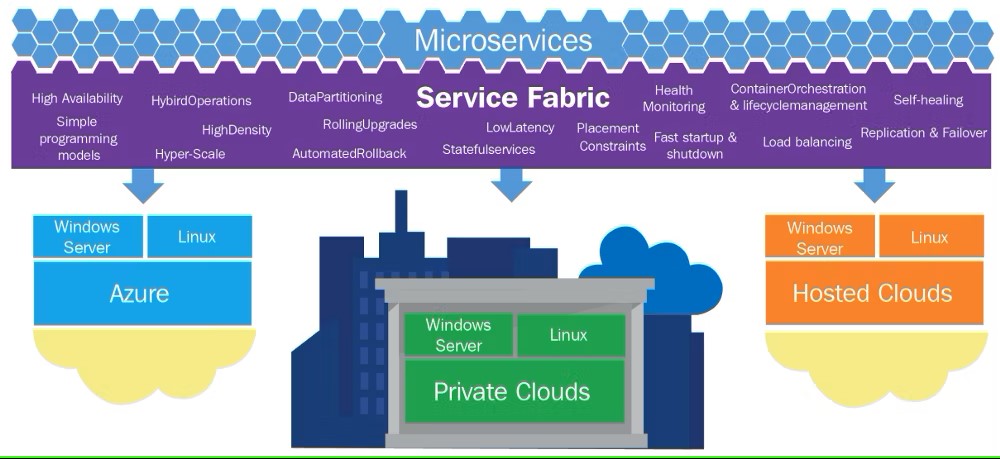Maximizing Microsoft Fabric Performance in Microservices: Expert Strategies
In the era of data and AI, Microsoft Fabric stands out as an innovative analytics platform that seamlessly integrates data and AI technologies into a unified product. It empowers businesses to connect, curate, analyze, and visualize their data with unmatched ease and efficiency. However, when coupled with the microservices architecture, Microsoft Fabric’s potential can be further amplified, albeit with some unique challenges. In this blog post, we’ll explore how to enhance the performance of your Microsoft Fabric applications within a microservices framework.
The Power and Challenges of Microservices
Microservices, characterized by their small, independent, and loosely coupled services, have revolutionized application development. They offer scalability, flexibility, and faster development cycles, but they also introduce performance challenges:
- Reducing communication latency and overhead between microservices.
- Optimizing resource utilization and allocation of microservices.
- Handling load balancing and fault tolerance of microservices.
- Testing and debugging the performance of microservices.
Unveiling Performance Tips for Microsoft Fabric in Microservices
- Utilize gRPC for Inter-Service Communication
gRPC, an open-source framework, facilitates high-performance, low-latency communication between microservices. It employs binary serialization and HTTP/2 to minimize communication overhead. Leveraging gRPC can offer:
- Speed: Lower communication latency with efficient data serialization and multiplexing.
- Efficiency: Streamlining resource usage with streaming, flow control, and cancellation mechanisms.
- Compatibility: Support for multiple languages and platforms, enhancing development flexibility.
To seamlessly integrate gRPC with Microsoft Fabric, Azure Communication Services (ACS) provides secure and reliable communication capabilities. ACS enables the creation and management of gRPC channels and endpoints, and aids in monitoring and troubleshooting inter-service communication.
https://synapsefabric.com/2023/08/12/exploring-the-power-of-microsoft-fabric-a-comprehensive-guide-for-developers/
- Harness Kubernetes for Orchestration and Scaling
Kubernetes, an orchestration platform, simplifies the deployment, scaling, and management of containerized applications. Within Microsoft Fabric, Kubernetes addresses performance needs in the following ways:
- Scalability: Respond to demand fluctuations by dynamically scaling microservices.
- Reliability: Ensure availability and resilience through load balancing and fault tolerance.
- Portability: Deploy microservices across diverse environments through Kubernetes’ flexibility.
Azure Kubernetes Service (AKS) harmoniously merges Kubernetes with Microsoft Fabric. It streamlines cluster creation and management, enabling microservice deployment, integration, and orchestration.
- Leverage Azure DevOps for Testing and Debugging
Azure DevOps, a comprehensive cloud service, enhances the software development and delivery process. It’s an invaluable asset for optimizing microservice performance:
- Quality: Test and debug microservice performance using tools like Visual Studio Code and Application Insights.
- Productivity: Improve development cycles with Azure DevOps tools like Azure Repos, Azure Pipelines, and more.
- Collaboration: Facilitate teamwork through collaborative tools and features, enhancing productivity and code quality.
Synapse VS Code extension serves as a bridge between Azure DevOps and Microsoft Fabric. It empowers developers with an integrated environment for notebook creation, Spark job definitions, and seamless integration with Azure DevOps tools and services.
Enhancing Microsoft Fabric’s performance within a microservices architecture unlocks a new level of innovation. By adopting gRPC for communication efficiency, Kubernetes for orchestration and scaling, and Azure DevOps for testing and debugging, developers can tackle the challenges inherent to microservices. As you delve into this realm, remember that Microsoft Fabric’s capabilities coupled with microservices’ agility pave the way for powerful data and AI solutions. Seize the opportunity to transform your organization’s analytics landscape and drive it to new heights. Embark on this journey today and experience the potential of Microsoft Fabric in a microservices world.






